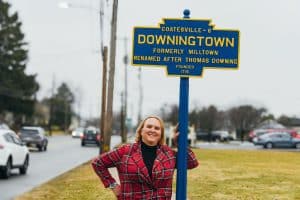Coast to coast, educators are sounding the alarm over roughly $7 billion of public education cuts which ultimately will harm the most vulnerable of children and young people nationwide.
A virtual press conference around funding cuts to public education nationwide was held Thursday and hosted by Defend America Action. It included former Secretary of Education Miguel Cardona, appointed by President Joe Biden; Karen Smith, a Central Bucks School District school board member; and Nick Melvoin, a Los Angeles Unified School District school board member.
“The funds they are cutting are aimed at helping some of our neediest students. Students who, even if they’re experiencing trauma at home or don’t speak English fully yet, are still expected to take annual standardized tests,” Smith explained.
She said about 80% of Central Bucks School District’s budget is earmarked for payroll “which is set by contracts. We can’t just decide to pay our employees less, and with a labor shortage hitting all school districts, we can’t afford to pay uncompetitive wages.”
While Smith acknowledged Central Bucks is among the wealthiest districts in Bucks County, about 14% of students still rely on free and reduced meal programs under Title I and 11% of students receive special education services.
“When the Trump administration announces in very late June that they are withdrawing funds included in our budget, the only options we have are to transfer from the unassigned fund balance, if the school district has any, and many school districts do not, or to cut programs,” she said.
There are limits and restrictions on the amount of annual property taxes districts can levy, and how much in “unrestricted fund balance” districts are allowed to hold in reserve, she explained.
According to Education Week, Trump wants to slash an estimated $7 billion in funding for federal K-12 programs for fiscal year 2026, which begins Oct. 1.
Most of the cuts will slash resources for ESL (English as a Second Language) students, migrants, students with housing insecurity, and Native and rural school children.
“There will be greater absenteeism … [and] less students filling out college applications” as a result of the funding cuts, Cardona said.
Special education funding will “flow to states through a single funding stream rather than a core set of dollars for schools supplemented by smaller separate allocations for infants and toddlers, family resources, technology tools, and state personnel development,” Education Week reported.
READ: The GOP’s Budget Bill and Its Federal Funding Cuts Will Harm Bucks County Students
Smith said the issue with federal money cuts ties directly to how local schools in Bucks County and across Pennsylvania are funded: state, federal and local sources and primarily through property taxes.
The federal Title I program provides funding to support low income youngsters and those in high poverty school districts.
Central Bucks serves 17,000 students across roughly 120-square miles including Doylestown borough, township and surrounding communities.
About 80% of the district’s recently adopted $420 million budget for the 2025-26 school year will be spent on employee salaries and benefits, she emphasized.
And there are limits and restrictions on the amount of annual property taxes districts can levy, she explained.
Public school districts in Pennsylvania cannot increase taxes above the Act 1 Index (Known as the Taxpayer Relief Act) with limits set by the state unless districts receive referendum exceptions approved by the commonwealth or by voter referendum. The Act 1 Index is set each year based on an inflation index.
Smith said private and charter schools are not subject to the same regulations and are not required to accept and educate all students.
“Vouchers essentially steal funds from public schools, and hand them off to private or charter schools with little accountability,” she said. “Private and charter schools are not required to accept every student, test students or adhere to the same standards for teachers or curriculum. Yet a voucher can move a student and taxpayer dollars away from public schools … to the Wild West of private and charter schools.”
Public schools are mandated to educate all students within their district borders.
Specifics of the federal legislation’s impact to education funding adopted July 4 was after Pennsylvania school boards had submitted their own budgets on June 30. Districts “took a leap of faith” then and now must find ways to adjust their funding shortfall to still deliver programs to kids.
Smith said the state and federal government does not hold itself to the same deadline standards it expects from local school districts. Public school districts must adopt a “balanced budget” by June 30, are responsible for mandatory annual “random” audits and must make financial reports as well as hold to other state and federal operation and reporting guidelines.
“It feels grossly unfair and unjust to be forced at the school district level to pass and maintain balanced budgets annually … when both the state and federal governments can be weeks late on their budgets and add millions or trillions of dollars onto the deficit,” she said.
The Trump Administration has advanced school vouchers as part of its signature legislation, which includes private school vouchers and donor tax relief.
Education Week reported the federal law requires states to “opt in,” which sets the stage for fresh battles over school choice programs.
Both Smith and Melvoin said Immigration and Customs Enforcement or ICE “cannot come onto school grounds without a warrant” and Smith said “trust in the relationships with teachers and building principals” was paramount to protecting families.
READ: Central Bucks Community Grapples with the Specter of ICE Raids at Local Schools
Melvoin, who is a former ESL teacher and attorney, said positive relationships with local law enforcement have been essential to his district’s “sanctuary district” environment.
“There has not been a standoff where there is a judicial warrant … and our mutual aid with local enforcement is supporting our families,” Melvoin explained.
Los Angeles does not participate in 287(g) ICE partnerships, the National Immigration Law Center website said.
In Bucks County, it remains to be seen how ICE raids could impact school children and their families – if and when – such activity occurs.
Earlier this year, Bucks County Sheriff Fred Harran signed an ICE 286 (g) agreement, which is the subject of a lawsuit made by the American Civil Liberties Union of Pennsylvania and the Community Justice Project.
Cardona said federal funding cuts will have a significant impact on kids “K-12 and higher education levels” for years to come.
“This isn’t a red or blue thing…this is about children,” Cardona said.






